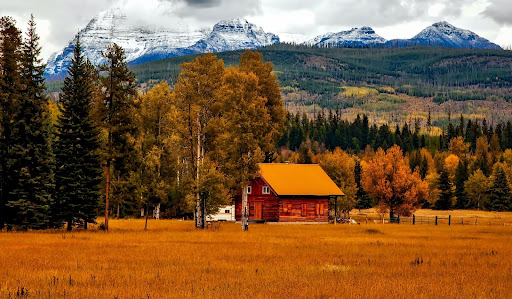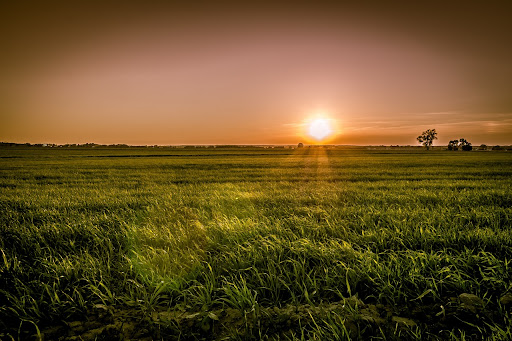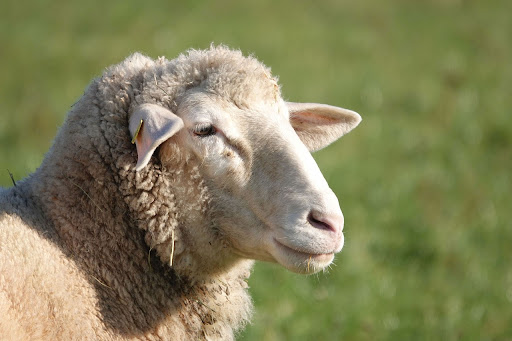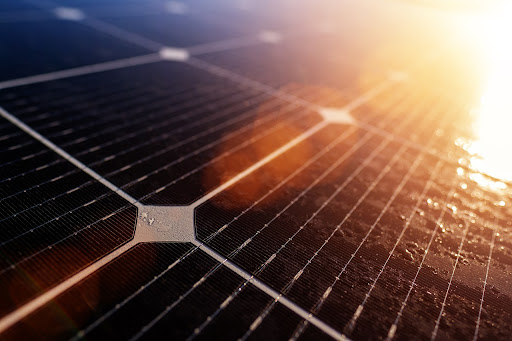
As a farmer in Colorado, you’ve likely experienced the recent soaring energy and operations costs and are currently looking for ways to reduce them. And since you’ve arrived here, it’s likely that the possibility of going solar has crossed your mind more than once.
However, transitioning to solar is a big project to undertake and requires a large upfront investment. Naturally, you have many questions about how beneficial solar panels for farm businesses really are and how they might work for your agricultural business.
Therefore, to address some of your initial concerns, we’ve compiled this comprehensive guide with many FAQs covering everything from costs and financing to installation and how solar affects the land around it.
If, however, you don’t see your question listed here, please don’t hesitate to get in touch with a member of our friendly team at 8760 Solar, who will happily answer it for you.
Key Takeaways:
- You can get 100% ROI within the first year
- Solar energy for farmers can make savings of up to 96% off the cost of energy bills
- There is a wide choice of installation types that can be installed in many different places
- Solar energy farms and crop farming can coexist on the same plot of land
- The panels can improve crop yields, retain soil moisture levels, and promote healthy biodiversity
- Solar hardware has great longevity and is easy to maintain
What Is Solar Power in Agriculture?

How are solar panels used in agriculture, exactly? This is one of the first questions we get from farmers and agricultural businesses, with many believing they have to turn over their valuable farming land in favor of rows and rows of panels.
However, this simply isn’t the case. Solar energy farming is certainly one way to benefit from solar power, but in the majority of cases, solar panels are installed so farmers can power their farms, save significantly on their energy bills, and reduce their operational costs.
With the modern solutions that exist today, solar panels don’t have to take up any farming land if you don’t want them to, and you can explore some of the farming/solar coexistence options as well.
With that out of the way, let’s start with the costs.
Costs and Financing

Solar for agriculture does require a significant upfront investment, which, at first glance, can discourage solar farmers.
However, with all the available tax credits, incentives, a potential ROI of 100%+, and energy savings of up to 96%, the investment costs are soon recouped.
How Much Will It Cost to Install Solar Panels on My Farm?
Very broadly speaking, solar installations cost between $400,000 – $500,000 per acre. However, unless you are planning to create a solar farm, you won’t need nearly as much as this. For our basic setup which consists of 25 kW, you can expect to pay around $90,000 per meter.
However, the cost of a solar installation depends on a great many factors, including:
- The size of the installation and number of solar panels
- The current cost of the components and materials
- The type of mounts used (roof-mounted, ground-mounted, etc.)
- The amount of labor required
- The limitations of the net metering agreement with your utility
Ultimately, there is no one-size-fits-all approach to the cost of installation, and the cost for one farm is likely to be completely different from another.
To understand how much going solar will cost you, your solar developer will conduct an analysis of your land and premises, and they will help you determine the options that will work best for you – and your budget.
Are There Any Financial Help or Tax Credits Available in Colorado for Installing Solar?
The great news is that there are currently plenty of incentives and tax credits available to offset the cost of your solar investment. Currently, Colorado farmers can enjoy:
- USDA Rural Energy for America Program (REAP) grant: farmers and agricultural businesses can apply for a grant up to 50% of the cost of their solar installation (available until 2024), capped at $1 million
- The Federal Solar Tax Credit: A 30% investment tax credit (ITC) for businesses that go solar
- The Colorado Enterprise Zone Program: An additional 6% tax credit for solar installations in 16 predetermined enterprise zones across Colorado
Solar for farmers can also achieve between 28% – 33% depreciation off your taxes.
How Much Can I Expect to Save on My Electricity Bills?
Solar-powered farms can save up to 96% on the cost of their energy bills. There will always be a small leftover charge such has demand or admin fees from the utility provider which can’t be eliminated. However having solar can possibly reduce your demand fees.
What’s the ROI on Having Solar Installed?
Thanks to the numerous tax credits and government initiatives coupled with depreciation, it’s achievable to get over 100% ROI in the first year of your solar system’s operation.
If I Give Up Farmland for Solar Installation, Will This Increase the Price of Produce?
There is nothing to suggest that giving up land in favor of solar energy will increase the price of what you produce. In fact, in addition to the energy cost savings, solar panels can actually be financially beneficial for farming businesses:
- Agricultural solar panels can be installed just about anywhere, including marginal lands such as across irrigation ditches or on the roofs of farm buildings. This gives you the benefit of solar without sacrificing valuable farming land.
- The shade provided by the panels provides the right conditions for high-value fruits and vegetables to thrive.
- Agrivoltaics – where farming and solar energy exist on the same plot, provide a double income opportunity from a single piece of land.
Installation

When looking at how to incorporate solar energy in agriculture, many concerns arise, particularly on how the land will be affected during the installation process and how much space the equipment will take up.
Ultimately, there are lots of different solar panels for farmers and many different ways they can be installed so they have little to no disruption or interference with your day-to-day operations.
Can I Install Solar If I Lease My Land?
Yes, it is possible however, this is entirely dependent on your lease terms. Please consult your landlord to determine if you can or cannot install solar on the leased land.
How Much of My Land Will Solar Panels Take Up?
The answer to this question entirely depends on where you decide to have the solar panels installed. Roof-mounted installations on farm buildings and houses won’t take up any valuable land space at all, whereas ground-mounted installations can take up large areas of land.
As a guide, a standard 25kw array size is 121ft long x 16ft wide. As farmland is typically flat, there is very little ground disturbance in the form of clearing or grading. An array can be installed in the spare space of a crop circle, beside a farm building, or on top of it.
Additionally, the land that you use for your solar installation can also be used for farming or sheep grazing. This allows solar and farming to coexist on the same plot and doesn’t reduce your agricultural output.
How and Where Can Solar Panels for Agriculture Be Installed?
Farm solar panels can be installed in a great many places. The best areas for them should have an unobstructed view of the sky, such as rooftops or large open fields. Here’s a quick overview of the choices:
- Roof-mounted: These solar panels for farm buildings are either fixed on by rails or directly onto the roof. This includes farmhouses, buildings, barns, garages, carports, and more.
- Flat roof-mounted: Similar to ground-mounted, these panels can sit atop flat roofs.
- Solar shingles: A roof tile that doubles up as a solar panel. Suitable for all types of shingled roofs.
- Ground-mounted: Either fixed to the ground in rows by steel rails or fixed atop single poles. The panels can either be installed low to the ground or raised above it.
- Vertical montage: Another type of ground mounting. These look a bit like fence panels and are ideal for areas where machinery has to pass by.
- Floating panels: Installed on bodies of water, such as lakes and reservoirs.
- Ditch-mounted: Panels can be installed to straddle irrigation ditches and channels.
My Farmland Is on a Floodplain, Can I Still Install Solar?
Solar farms on agricultural land that experience flooding can and do exist, but there are special considerations to make.
All electrical equipment must be installed above the flood line so it won’t get damaged. The panels may also have to be installed on raised stilts or poles to avoid the water. This can raise the cost of the installation.
You may also have trouble getting insurance for solar panels installed on floodplains.
In many cases, it’s better to install solar on areas of the land that do not experience flooding (30 ft from drain ditches, atop hills, on roofs, etc.).
Will the Installation Process Interfere With the Running of My Farm?

Generally, no. In most cases, a solar power farm installation is not disruptive to the day-to-day operations of an agricultural business.
However, if you are at all concerned about this, consider having your solar energy farm installation take place in the colder months when you are less busy. Barring periods of extreme weather, generally when the ground freezes in Colorado, solar can be installed throughout the year.
How Long Does It Take to Put Up Agriculture Solar Panels?
The solar panel farm installation process can take a couple of days up to a few weeks. It depends on the size of the array and where the panels are to be mounted. Overall, it’s performed quickly and efficiently.
How Long Does It Take to Put Up Agriculture Solar Panels in a Vineyard?
A vineyard is no different from any other agricultural business when it comes to installing agriculture solar panels. The installation time is the same and ranges from a few days to a few weeks, depending on the scope of the farm solar project.
How Much Maintenance Do Solar Panels Need?
The good news is that solar panels on farmland require very little maintenance, even less if they don’t have tracking systems installed.
The main concern for solar arrays on farms is the build-up of dirt and debris. Keeping them clean will ensure they remain efficient and productive, so be sure to check them periodically and clean them as needed.
Solar arrays with tracking systems should also be regularly inspected to ensure the moving parts are clear of obstacles and debris.
To make maintenance easier, it’s possible to purchase a solar monitoring system. By using sensors across the solar system’s components, it’ll provide you with real-time data and can alert you if it detects a problem.
The only downside to monitoring systems is that they require a good internet connection to work efficiently. Therefore, they tend to be better suited to solar installations on or close by farm buildings
Solar and the Land Around It

How do solar panels help agriculture, exactly? Do they benefit the flora and fauna around them, or are the solar power farms detrimental to their surroundings? Well, the great news is that solar power fields are largely advantageous and can even be profitable.
Do Solar Panels Contaminate the Land Around Them?
Solar panels and supporting frames are chiefly made from silicone, glass, steel, and aluminum, none of which are known to impact the soil and land around them negatively.
A study from the EPRI found that there was no significant risk from the leaching of trace metals and that the greatest risk of contamination lies at the panel manufacturing plants.
Some panel manufacturers use cadmium telluride, which is known for its toxicity, but it has been shown that the toxic compounds do not emit from the panels. However, if the presence of cadmium concerns you, tell your solar developer not to install these kinds of panels.
How Do Solar Panels Affect Local Wildlife?
Wildlife that travels along the ground will only be impacted if the area enclosing the solar panels is fenced off. Most wildlife is small enough to pass around or underneath the panels without a problem.
There are some concerns that the reflective nature of the panels can look like a body of water to birds. This causes them to collide with the panel upon landing, generally causing injury or death.
A 2015 study by Argonne National Lab estimates that solar panels are responsible for 37,800 to 138,600 bird deaths in the US annually. In comparison, domestic cats in the US kill between 1.4 billion and 3.7 billion birds per year.
How Do Solar Panels Affect the Ground Temperature and Moisture Levels?
Thanks to the shade created by the panels, the air underneath them tends to be cooler during the day compared to the ground that remains in direct sunlight and warmer during the night. Additionally, the shade helps keep the soil cooler and significantly slows down water evaporation, resulting in higher, more prolonged moisture levels.
Since the soil does not dry out as fast, this has the knock-on benefit of helping prevent water runoff during rainy periods and reducing water requirements and costs for any crops grown underneath.
It’s worth noting, though, that the shade created by solar panels tends to be around 10°F warmer than the shade created by things like buildings and trees. This is because solar panels retain heat for longer and, therefore, heat up the air around them.
Do Solar Panels Increase Pest Populations and Other Problems Such As Fungus?
Although there haven’t been many studies in this area, there is no evidence to suggest that solar panels exacerbate pests and other soil problems like fungus.
On the contrary, the shade and microclimate provided by the panels help promote healthy biodiversity and allow native plants and wildlife to thrive.
Will the Heat Generated From the Panels Dry Out and Kill Vegetation?
It’s natural to think that a surface that spends all day being heated by the sun will also cause the space beneath it to heat up, too.
This is not the case for solar panels. In fact, the air underneath solar panels tends to be cooler during the day when full sun is present and only becomes warmer at night when the surrounding air cools down. Some studies suggest that these temperature changes don’t make a difference to the overall daily average crop temperatures when compared with crops that receive full sun.
Can I Put Grazing Animals Like Cows and Sheep on the Same Land As Ground-Mounted Solar Panels?

Placing grazing stock in the same space as solar energy farming is growing in popularity and is a wonderful example of how agriculture and solar can work together. The benefits are two-fold; you still get to profit off your land by using it for farming, and the animals keep the vegetation down, reducing the need for maintenance or the use of herbicides.
However, not all animals are suitable for this. Goats jump and climb and can easily damage the panels. Cows are also known to cause damage; however, raising the panels higher can be a solution for this.
Sheep are the best grazing companion for solar panels. Their placid nature means they’re unlikely to damage anything, and they are small enough to fit under a standard solar array without the need to raise it higher off the ground.
Fun fact: There is a large 80 MW solar facility in development in Delta, CO. The Garnet Mesa project will power 18,000 and provide grazing land for around 1,000 sheep.
Can I Grow Native Plants and Vegetation Underneath the Solar Panels?
Yes! You can grow native plants and vegetation underneath the panels. The partial shade creates a healthy microclimate and promotes biodiversity, including pollinators and other beneficial insects.
Thanks to Colorado’s sunny climate, you have a lot of choices for what you can plant underneath, including herbs, berry bushes, different varieties of grass, and much more.
Is It Possible to Grow and Cultivate Crops Underneath the Solar Panels?
It’s absolutely possible to grow and cultivate crops underneath solar panels, and this practice – called agrivoltaics – has been popular across Europe and in other parts of the world, such as Japan, for many years.
How is solar power being used in agriculture, exactly? Well, the shade provided by the panels allows certain crops to thrive, resulting in healthier yields and an abundance of produce.
If you want a great example of agriculture with solar energy technology existing happily together, check out Jack’s Solar Garden in Longmont, CO. This farm is also a firm testament to how solar panels increase agriculture activity and output.
What Are the Benefits of Colocating Crops and Solar Panels on the Same Piece of Land?
There are many benefits to using your land for both crop production and solar panel farming:
- Doubly economical – make money from your crops while saving money on your energy bills
- Removes the tough decision of whether a solar farm or crop production is the best way to use the land
- The shade created by the panels creates a microclimate where crops can thrive
- The panels protect vulnerable crops from the harsh midday sun
- Less water evaporation means fewer man-hours spent watering and less money spent on water
- The increased water retention reduces soil erosion
What Do I Do If I Want to Operate Farm Machinery Where My Solar Panels Are Installed?
Solar panels in agriculture can be adapted for farm machinery to pass by safely. A standard ground-mounted solar array does not provide enough space for farm machinery to operate under or around it, but there are several different installation types that do:
- Stilted or raised arrays: These look similar to the standard rows of panels except that they are raised up on stilts high enough for farm vehicles to pass underneath.
- Pole-mounted: This consists of a cluster of solar panels mounted on a single pole. The pole can be raised high enough for machinery to operate underneath, and the clusters can be installed far enough apart for machinery to pass between.
- Vertical-montage: A newer style of mounting, the panels are installed vertically, kind of like a fence panel. This provides ample room for machinery to pass between the rows.
Can I Continue to Spray Pesticides and Herbicides in or Around the Solar Field?
Many solar farms currently use herbicides around their installations to manage vegetation growth.
Spraying these chemicals around your own installation will not present a problem, and it’s unlikely the panels will suffer damage if sprayed, but it’s advised not to spray the panel surface directly. Solar panels are easily cleaned with water, so if you do accidentally spray them with chemicals, you can quickly wash them off.
Can I Revert Back to Farming the Land When the Solar Panels Are Uninstalled?
There is no reason why you cannot use the land for agricultural purposes once the solar panels have been uninstalled.
Resting land provides the opportunity to introduce more nutrients and biodiversity to the soil, increasing its quality. Given that a solar panel’s lifespan can be up to 30+ years, the soil underneath tends to be rich and healthy after it has been rested for so long.
Some factors can affect this, however, depending on whether the land has been used for agrivoltaics or grazing.
I Burn My Fields Annually; Is It Safe for Me to Install Solar?
Since solar panels use electrical equipment, it is not safe to install them anywhere near annual burn sites. However, that does not mean you cannot have solar installed.
Talk to your developer and ensure you tell them that you regularly conduct burns on your land. The developer can then discuss the options available to you. In many cases, solar panels can be safely installed on the roofs of farm buildings instead of on the land.
Power and Performance

Finally, let’s check out how powerful agriculture solar can be. Solar has excellent longevity and can power your farm for many years to come. That means you can look forward to low energy bills for the foreseeable future.
How Much of My Farm Can Be Powered by Solar?
The answer to this question really depends on the size of your operation and the size of your solar installation. But technically, yes, an entire farm can be powered by solar energy.
When talking to your solar developer, they will run an analysis on your farm to determine what size of a solar array is required to power your farm and if it’s possible to install it on your premises. Local utility regulations also play a part in what size array is permitted and in turn if over-production is allowed.
I Have Irrigation Equipment Installed; Can Solar Power It?
Solar can definitely power your irrigation equipment, and it can do this in two ways. First, it can offset the power required to run the pump and other running equipment.
Secondly, and best of all, it can provide power to any remote irrigation systems that you have, removing the need for a grid connection or to have costly generators in place.
How Will Things Like Dust and Snow Affect the Performance of the Panels?
While a light covering of dust won’t make too much of a difference, a significant build-up of dust will lower the panels’ efficiency. There are a couple of things you can do to prevent this, though.
Growing vegetation underneath the panels actually demonstrates how agriculture helps the solar system since it reduces the amount of dry soil dust in the air. Additionally, regular maintenance and panel cleaning will prevent any significant build-up.
As for snow, the panels are tilted at a 20-degree angle which makes it very difficult for the snow to cling onto. Additionally, since the panels are dark in color, they attract and absorb the sun’s warmth much faster, which helps speed up the snow’s melting process.
Unless the snowfall has been extreme, it will simply slide off the panels and onto the ground.
Overall, unless there’s a severe dust storm or snowfall, it’s unlikely either will affect the performance of your panels by more than a percent or two.
Do Solar Panels Work in the Winter?
It’s a popular misconception that a solar panel for agriculture requires direct sunlight to be effective. And while direct sunlight will achieve maximum efficiency, as long as there’s light, solar panels will continue to harvest energy.
Of course, the reduced daylight hours and fewer sunny days will result in less energy harvesting, but bear in mind that your farming operations are also reduced during winter months and, therefore, don’t require nearly as much power.
What Is the Lifespan of a Solar Panel on a Farm?
Solar panels for farm use have excellent longevity. If you take care to maintain your solar panels properly, they will enjoy a life span of 25 – 30 years. Many solar panels are known to last much longer than this, although their efficiency reduces over time.
How Do I Get Started?
If you’re ready to learn more about the benefits of solar farming and would like to have an analysis conducted on your farm, we welcome you to get in touch with us over at 8760 Solar. We’re excited and motivated to share the future of clean energy and agricultural solar with you.
To get started, text “READY” to 719 470-0254 or get in touch via email: sales@8760solar.com.
